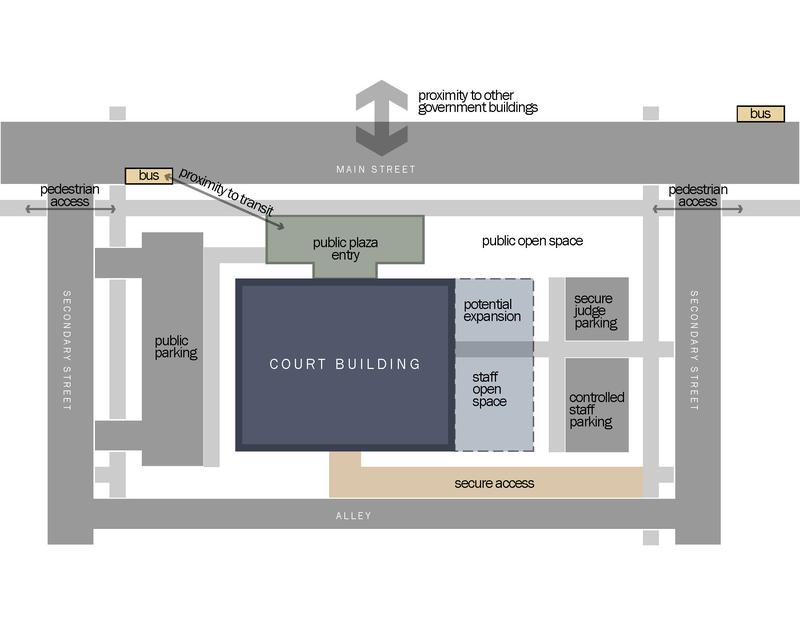If the courthouse is to be relocated to a new site, major consideration should be given to the effect that the move will have on the public and client populations. How accessible is the new location? Is public transportation available? Is there sufficient parking? Another factor to be considered is the affect that a move will have on the movement of in-custody defendants and how transportation costs will be affected.
 |
|
Sample Courthouse Site Plan |
Common considerations include:
- Ease of public access.
- Availability of public transportation
- Access to parking.
- Proximity to other government buildings and programs.
- Relationship to other services such as restaurants, office supplies, libraries, and copy centers.
- Proximity to attorney offices.
- Relationship to the civic center.
- Impact on surrounding residential neighborhoods.
- Prominence of the site.
- Availability and cost of site.
- Expansion potential.
- Site amenities.
- Physical constraints of the site.
- Site use restrictions.
- Prisoner accessibility.
The site should be one that is easily reached by the general public, either by car or public transportation. It is desirable that it be close to the main business district and any cluster of professional offices, particularly attorneys, and near other government offices with which the court interacts.
While it is not essential that the courts be located near the jail, it is often desirable. Those courts that have direct access from the jail to the court experience fewer problems and reduced expense for transportation of prisoners. Where this is not possible, a special entry, or vehicular sally port, for prisoner transport vehicles is required.
Today many new courthouses are built on the perimeter of the community in which they were once located because of congested downtown locations and the scarcity of suitable building sites large enough to accommodate the new building’s requirements.
